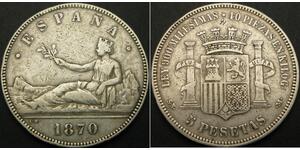1 Ducat (Venduta per $53.0)
1837, Austrian Empire, Ferdinand I. Silver Coronation Ducat Coin. Silver Strike!
Mint Date: 1837
Mint Place: Vienna?
Reference: Montenuovo 2569, Resch 252 var. (there in gold).
Condition: A scratch in obverse and a few rim hits, otherwise a nice VF-XF!
Denomination: Pattern Coronation Ducat (silver strike) - Struck for the Homage/Coronation of the Emperor in of Hermannstadt (Transylvania/Siebenbuergen/Romania)
Diameter: 20mm
Weight: 5.48gm
Material: Silver
Obverse: Laureate head of Ferdinand I right.
Legend: FERDINANDO•A•I•REGI• HVNG•M•P•TRANSYLVANIAE
Reverse: Crowned arms of Transylvania (German Name: Siebenbuergen = "Seven-Castle County").
Legend: HOMAGIVM•PRAESTITVM•CIBINII• MDCCCXXXVII
Transylvania is a historical region in the central part of Romania. Bounded on the east and south by the Carpathian mountain range, historical Transylvania extended in the west to the Apuseni Mountains; however, the term sometimes encompasses not only Transylvania proper, but also the historical regions of Crișana, Maramureș, and Romanian part of Banat. The region of Transylvania is known for the scenic beauty of its Carpathian landscape and its rich history. In the English-speaking world it has been strongly associated with vampires, chiefly due to the influence of Bram Stoker's novel Dracula as well as its later film adaptations and extensions.
Ferdinand I, Emperor of Austria, King of Hungary and Bohemia (April 19, 1793 – June 29, 1875) succeeded his father (Franz II Holy Roman Emperor/Franz I of Austria) as emperor and king (as Ferdinand V) in 1835. He chose to abdicate, after a series of revolts in 1848. He was also King of Lombardy-Venetia.
Ferdinand has been depicted as feeble-minded and incapable of ruling, but although he was epileptic and certainly not intelligent, he kept a coherent and legible diary and has even been said to have a sharp wit. The up to twenty seizures he had per day, though, severely restricted his ability to rule with any effectiveness.
Though he was not declared incapacitated, a regent's council (Archduke Luis, Count Kolowrat and Prince Metternich) steered the government. His marriage to Princess Maria Anna of Sardinia (1803-1884) was probably never consummated, nor is he believed to have had any other liaisons. He is famous for his one coherent command: when his cook told him he could not have apricot dumplings because they were out of season, he said “I'm the Emperor, and I want dumplings!” (German: Ich bin der Kaiser und ich will Knödel.)
As the revolutionaries of 1848 were marching on the palace, he is supposed to have asked Metternich for an explanation. When Metternich answered that they were making a revolution, Ferdinand is supposed to have said “But are they allowed to do that?” (Viennese German: Ja, dürfen's denn des?) He was convinced by Felix zu Schwarzenberg to abdicate in favour of his nephew, Franz Joseph (the next in line was Ferdinand's younger brother Franz Karl, but he was persuaded to waive his succession rights in favour of his son) who would occupy the Austrian throne for the next sixty-eight years.
Ferdinand recorded the events in his diary : "The affair ended with the new Emperor kneeling before his old Emperor and Lord, that is to say, me, and asking for a blessing, which I gave him, laying both hands on his head and making the sign of the Holy Cross ... then I embraced him and kissed our new master, and then we went to our room. Afterward I and my dear wife heard Holy Mass ... After that I and my dear wife packed our bags"
Ferdinand was the last King of Bohemia to be crowned as such. Due to his sympathy with Bohemia (where he spent the rest of his life in Prague Castle) he was given the Czech nickname “Ferdinand V, the Good” (Ferdinand Dobrotivý). In Austria, Ferdinand was similarly nicknamed “Ferdinand der Gütige” (Ferdinand the Benign), but also ridiculed as "Gütinand der Fertige" (Goodinand the Finished).
He is interred in tomb number 62 in the Imperial Crypt in Vienna.
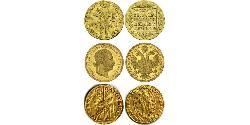
spa1 » Various Ducats (23 monete)
The first issue of this coin is thought to have been under Roger II of Sicily, who, in 1140, coined ducats bearing the figure of Christ, and the inscription, ‘Sit tibi, Christe, datus, quem tu regis iste ducatus’ (or roughly, “O Christ, let this ...
5 Peseta Prima repubblica spagnola (1873 - 1874) Argento
il gruppo ha 38 monete / 33 prezzi
⇑

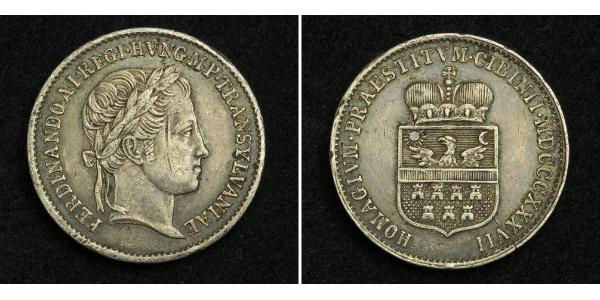


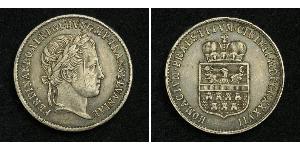
 English
English





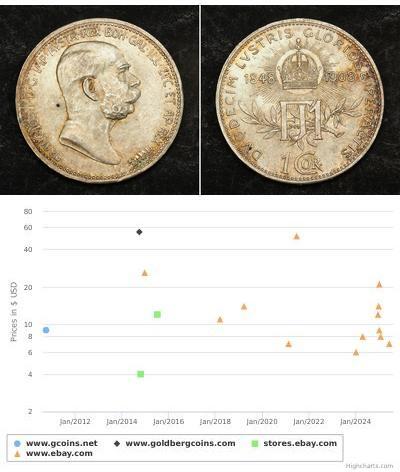
-300-150-DTwKX9ISLbYAAAFanYlMgKms.jpg)
